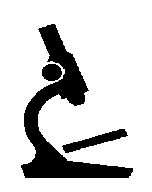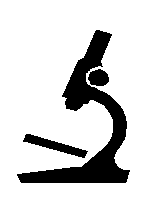 |

Shaatnez Inspection Service of Seattle Since 1972
|
 |
 |

Shaatnez Inspection Service of Seattle Since 1972
|
 |
 |
wool and linen together? Are you Sure? Have them inspected by a professional.
|
|
|
|
| Suit: |
$10.00
|
| Jacket: |
$7.50
|
| Pants/Others: |
$2.50
|
| Shaatnez removal: |
$10.00
|
| Rates: as of 1 Jan 1997 | |
Explanation of Shaatnez:
"Don't do it" laws work pretty well at home when we tell our children, "Don't do it." If they ask, "Why not?" and we answer, "Because I said so," chances are pretty good, they will still obey our command. For modern Jews, however, who sometimes expect REASONS for following Halachah, "Don't do it" commandments are frustrating.
They were frustrating for our rabbis as well. Just as our children try to figure out why we've said, "Don't do it," our rabbis tried to figure out the Torah commandment against wearing wool and linen in the same garment. Even though they weren't always satisfied with their reasons for "Don't do it" commandments, THEY FOLLOWED THE COMMANDMENTS ANYWAY. When the Jews received the Torah at Mount Sinai, they said: "Na'aseh VeNishma!" (We will do and we will hear) They agreed to keep the mitzvos even though they may not understand the reasons for them. This is the mark of the Jew - do the mitzvah first, figure out why later.
(Our children frequently try to find a reason for our "Don't do it" so they can get around doing what we've ordered....)
See if you can think of a reason for the commandment, "Don't mix wool and linen in one garment."
Again, let me emphasize that we DON'T REALLY KNOW WHY SHAATNEZ IS FORBIDDEN, but it here's an idea that may help us understand a little about it: Elsewhere in the Torah, we are forbidden to mix different kinds of seeds together to create new foods. We're forbidden to graft one kind of fruit tree onto another to make a new kind of fruit. We're forbidden to breed different kinds of animals together to make new kinds of animals. I think these all have something in common: they hint that we don't think the world is perfect the way it is.
Imagine painting a picture. Your friend looks, ask, "How do you like my picture?" Your friend looks, smiles, and says, "It's terrific! It's perfect!" You smile. Then your friend picks up a brush and says, "Well, how about if you put a little yellow here (dab) and some blue here (splash), and some green, no red, over here (splish)." How would you feel?
Well, that's the way we Jews view the world. We say, "The earth is G-dís and everything in it." G-d created everything, and, when G-d was finished, everything was COMPLETE, finished, perfect.
By making new kinds of plants, new fruit, new animals, and new materials, our rabbis say we're insulting G-d. We're permitted to create synthetic materials (polyester is OK), but we're not allowed to tinker with natural materials. So Shaatnez became an important mitzvah, commandment. They didn't want to go around insulting G-d, right? So they carefully checked their clothes to make sure they didn't contain Shaatnez.
This theory is emphasized by the specific prohibition against linen and wool. These two substances are the extremes of the fiber spectrum. One comes from an animal, the other from a plant. Wool is the warmest of natural fibers; Flax is the coolest. While in practice, many garments do not have any Shaatnez and may be assumed to have none, the particulars vary by garment type. The padding in many garments such as suits or the embroidery thread, such as designs on sweaters (men's and women's) may cause shaatnez problems. The padding filler in many suits is made of assorted rags which may be mixed linen and wool in themselves (so it is not just a worry of linen threaded padding in a wool shell suit).
Well, how do you check to see if you're wearing Shaatnez?
What is the process?
If a suit is OK, you will be told immediately. If there's a question, you'll have to wait for a card from the NY office for the final answer. If Shaatnez is found in the collar, it can usually be removed. This requires removal of ALL linen fibers. This takes an extra 45 - 60 minutes. You will be given a verified non-linen stiffener. You then have to take the suit to a tailor for restoration.
Where is Shaatnez usually found?
What types of clothing have to be checked?
What types of clothing DON'T have to be checked?
What if I have two suits from the same manufacturer? Can I test one and trust the other?